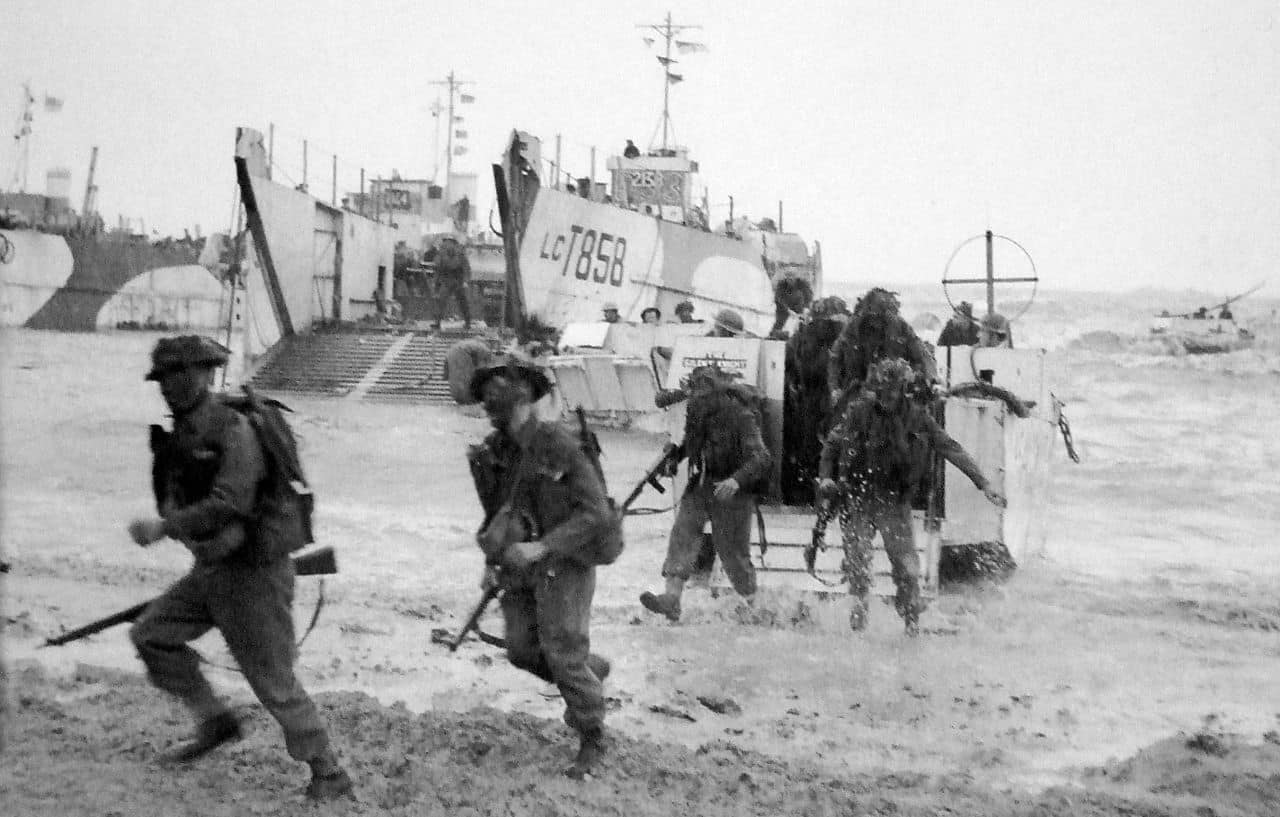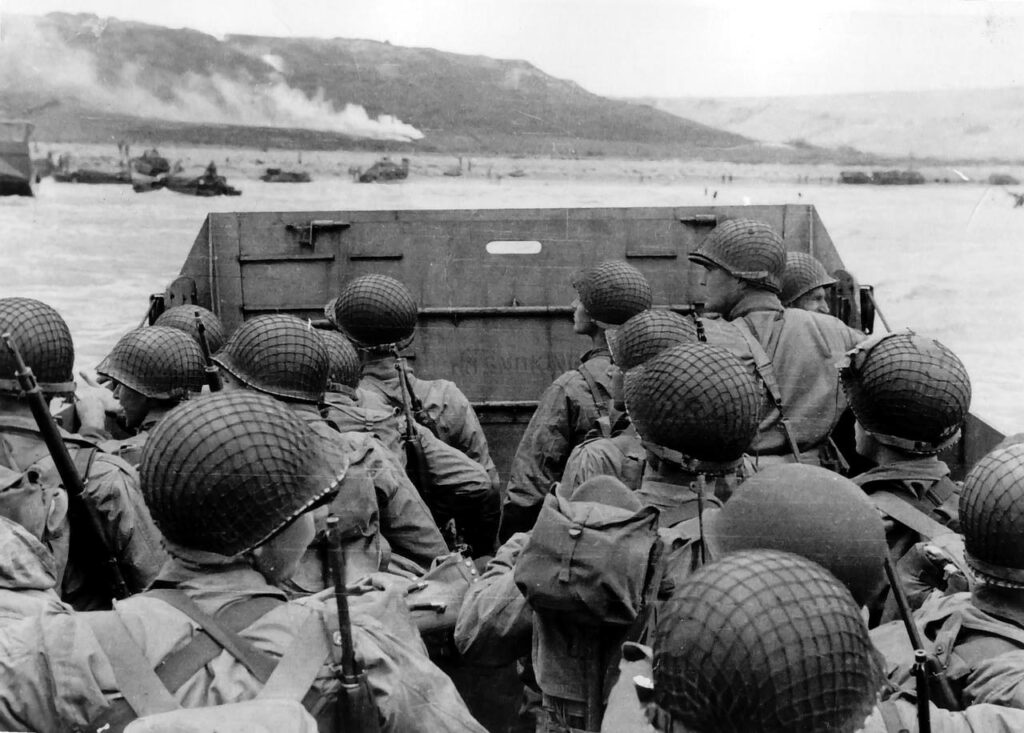D‐Day: the Normandy landings, the operations on Tuesday, 6 June 1944, of the Allied Invasion of Normandy, the largest seaborne invasion in history. The Royal Marines were involved in many parts of the operation, on land, at sea, and in the air.
Before D‐Day, Marines and MARENS served on the planning staff. While in the air, two RM pilots flew as night fighter interceptors in the run-up to landings. One RM officer and his MOA parachuted in with the 6th Airborne. For the naval bombardment, some 3315 marines served in ship detachments and took part in the bombardment and clearance operations, and over 1550 men served in major support craft, close to the beaches, clearing obstacles and providing smoke and flak cover.

The Landings: More than 600 Marines landed in the Centaur and Sherman tanks of the armoured support roup. By far the biggest source of manpower in the Corps was the 8,000 crewmen of minor landing craft. They served from the very first moments of the assault, then for many weeks, ferrying a vast amount of men and material ashore under constant threat from aircraft, destroyers, e-boats, V-bombs, midget submarines, and German land-based artillery. Over 2000 Royal Marine Commandos landed in the hours after the first wave and faced some of the most difficult tasks in securing the flanks of the landing beaches. Marines also served in Obstacle Clearance Units, making the beaches safe, as well as in 30AU, getting ahead of the front line and securing enemy secrets.

Securing the bridgehead in the weeks after D‐Day, another 1000 marines took part as port parties, signaller, provosts, radar plotters, and HQ staff, while RM engineers assisted in building Mulberry Harbours.
Over 17600 Royal Marines took part in the operations; sadly, 137 lost their lives on D‐Day. By the time the enemy was driven from Normandy, over 400 Marines had been killed.
After the war, the Corps’ purpose changed forever; within a few years, they owned the Commando Role, and all the amphibious manoeuvre landing craft, ship detachments, and naval gunnery were all but consigned to history. The Corps of the last 80 years was born on D‐Day.